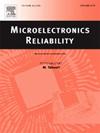自适应退化模型选择的铝电解电容器剩余使用寿命预测方法
IF 1.6
4区 工程技术
Q3 ENGINEERING, ELECTRICAL & ELECTRONIC
引用次数: 0
摘要
铝电解电容器(AEC)的降解过程通常具有非线性和多阶段等特点。这些降解特征导致难以准确预测铝电解电容器整个降解过程的剩余使用寿命(RUL)。在离线参数估计阶段,采用两步最大似然估计结合粒子群优化(PSO)算法估计两个阶段的初始退化模型参数。在动态参数更新阶段,采用连续贝叶斯方法更新模型参数。为了选择最佳降解模型,提出了一种基于历史 RUL 相似性的评估方法,以计算每个模型的适配度。最后,在 NASA 的加速退化数据集上验证了该方法的有效性,并使用了几种广泛使用的方法进行比较。实验结果表明,提出的方法具有更高的准确性,证明了该方法的优越性。本文章由计算机程序翻译,如有差异,请以英文原文为准。
A remaining useful life prediction method of aluminum electrolytic capacitor with adaptive degradation model selection
The degradation process of aluminum electrolytic capacitors(AECs) usually exhibits characteristics such as non-linearity and multi-stage. These degradation features lead to the difficulty to accurately predict the remaining useful life(RUL) of the whole degradation process of AECs. To address this, by dividing the capacitor degradation process into two stages, a two-stage RUL prediction method for AECs considering multiple degradation models is proposed in this paper.In the offline parameter estimation phase, the initial degradation model parameters of two stages are estimated using two-step maximum likelihood estimation combined with particle swarm optimization(PSO) algorithm. In the dynamic parameter updating phase, a sequential Bayesian method is used to update the model parameters. To select the optimal degradation model, an evaluation method based on historical RUL similarity is proposed to calculate the fitness of each model. Finally, the effectiveness of the method is verified on NASA’s accelerated degradation data set and several widely used methods are used for comparison. The experimental results show that the proposed method has higher accuracy, which proves the superiority of the method.
求助全文
通过发布文献求助,成功后即可免费获取论文全文。
去求助
来源期刊

Microelectronics Reliability
工程技术-工程:电子与电气
CiteScore
3.30
自引率
12.50%
发文量
342
审稿时长
68 days
期刊介绍:
Microelectronics Reliability, is dedicated to disseminating the latest research results and related information on the reliability of microelectronic devices, circuits and systems, from materials, process and manufacturing, to design, testing and operation. The coverage of the journal includes the following topics: measurement, understanding and analysis; evaluation and prediction; modelling and simulation; methodologies and mitigation. Papers which combine reliability with other important areas of microelectronics engineering, such as design, fabrication, integration, testing, and field operation will also be welcome, and practical papers reporting case studies in the field and specific application domains are particularly encouraged.
Most accepted papers will be published as Research Papers, describing significant advances and completed work. Papers reviewing important developing topics of general interest may be accepted for publication as Review Papers. Urgent communications of a more preliminary nature and short reports on completed practical work of current interest may be considered for publication as Research Notes. All contributions are subject to peer review by leading experts in the field.
 求助内容:
求助内容: 应助结果提醒方式:
应助结果提醒方式:


